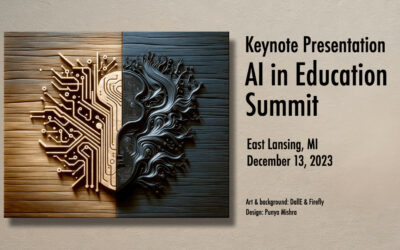Stacy Clause just sent me this very cool link to an article titled Exploring logo designs with Mathematica. In this article, Chris Carlson, of the User Design Group at Mathematia shows how one can mathematically develop variations on commercial logo designs by the systematic tweaking of various parameters. As Chris says,
As starting points for design explorations, corporate logos are ideal. They often distill a single idea into simplified geometric form that is straightforward to parameterize in Mathematica. Once a logo is in Mathematica, exploring its parameter space quickly leads to the discovery of new graphic phenomena, emergent forms, unexpected relationships, and burgeoning lines of inquiry.
What does this mean for graphic design (and graphic designers)? Does it mean that computers can now do what we used to pay people to do? This could be grim news for designers, particularly when they are already under siege from democratizing Web 2.0 tools like CrowdSpring (whose tag line is “just post your project, watch the world submit ideas and choose the one you like”). Below are some of my thoughts on this issue.
Coming back to Carlson’s work. Go ahead and read the entire article but I would like to highlight one of his examples to make my point. For instance consider the Mercedes-Benz logo


I am not sure that is the case. There are two important issues here that we need to think about. First, this is a great way to automatically create variations on a theme – which I have argued is the crux of creativity. However, this does not mean that humans are out of the picture totally. In fact the human steps in at two crucial points in this process.
The first is in choosing which parameters to include in writing the original code. That is not totally obvious and needs careful thought. Should you include the thickness of the outer circle? What about color? The options are large and the choices non-obvious. Setting and tweaking different parameters will lead to very different solutions.
The second place where humans step in is after all these variations have been created (and the computer creates LOTS of them). Selecting one for its appropriateness to organization for whom the logo is being designed, finding the right aesthetic look, understanding the context of use (on a website, on a car dashboard, in neon?)… all of these need human insight.
I do not mean to argue nothing will change for designers. Not at all. These new tools do have implications for how designers work, and of particular interest to me, since I am an educator, is how we train the next generation of designers. Clearly taking advantage of these new tools needs a new set of skills. For instance, programming is not something we typically teach in design school. In fact, artists and designers are often (and pardon me for stereotyping) trying to move away from mathematics. But as is clear, a designer with a good visual sense AND a knowledge of programming and mathematics is going to be much more efficient and generative (in terms of total ideas) than one with just the former.



Hiya,
Fun article. Simply wanted to let you know. Design & inspiration always together.
PM,
Certainly an interesting take on the Mathematica site. I find Mathematica quite the reverse- that is, designs can be expressed mathematically. Given that we may only see one or two iterations of a design, its quite interesting to visualize how tweaking a function (visually)produces different patterns ( ” what happens if…”).
I think we are starting here on different levels of expertise; Mathematica (and I recommend the site for statistical visualizations as well) as a marriage of both art, design, and math has given me much to think about in terms of how relationships are expressed in different modes, whether algebraic or visual. Imagining statistics or mathematical functions when analyzing a study ( i.e. where does the p value lie in relation to degrees of freedom, what does regression look like) seem much like the changes in the designs above and do much to improve my understanding of any design- logo or research.